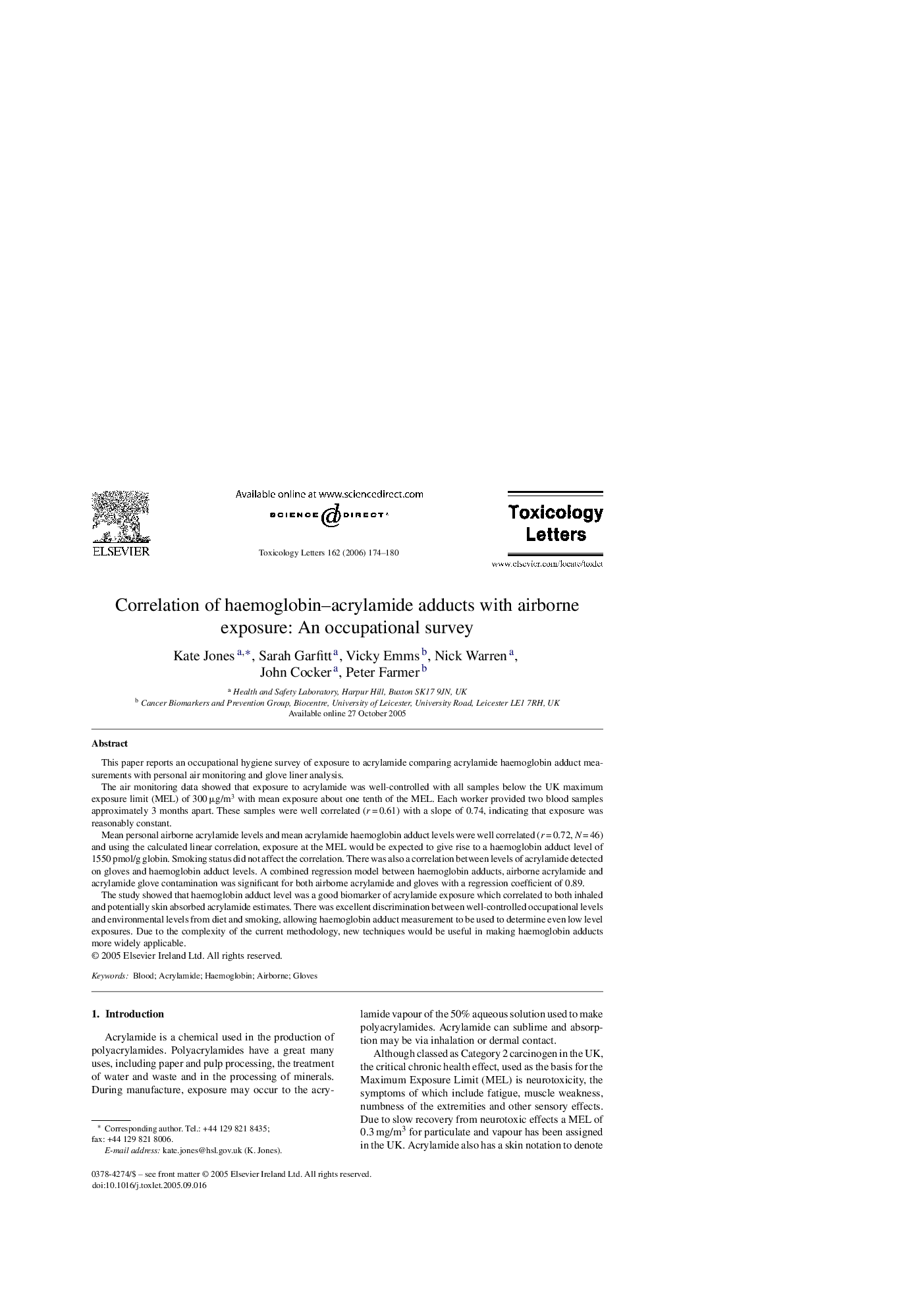| کد مقاله | کد نشریه | سال انتشار | مقاله انگلیسی | نسخه تمام متن |
|---|---|---|---|---|
| 2601325 | 1562652 | 2006 | 7 صفحه PDF | دانلود رایگان |

This paper reports an occupational hygiene survey of exposure to acrylamide comparing acrylamide haemoglobin adduct measurements with personal air monitoring and glove liner analysis.The air monitoring data showed that exposure to acrylamide was well-controlled with all samples below the UK maximum exposure limit (MEL) of 300 μg/m3 with mean exposure about one tenth of the MEL. Each worker provided two blood samples approximately 3 months apart. These samples were well correlated (r = 0.61) with a slope of 0.74, indicating that exposure was reasonably constant.Mean personal airborne acrylamide levels and mean acrylamide haemoglobin adduct levels were well correlated (r = 0.72, N = 46) and using the calculated linear correlation, exposure at the MEL would be expected to give rise to a haemoglobin adduct level of 1550 pmol/g globin. Smoking status did not affect the correlation. There was also a correlation between levels of acrylamide detected on gloves and haemoglobin adduct levels. A combined regression model between haemoglobin adducts, airborne acrylamide and acrylamide glove contamination was significant for both airborne acrylamide and gloves with a regression coefficient of 0.89.The study showed that haemoglobin adduct level was a good biomarker of acrylamide exposure which correlated to both inhaled and potentially skin absorbed acrylamide estimates. There was excellent discrimination between well-controlled occupational levels and environmental levels from diet and smoking, allowing haemoglobin adduct measurement to be used to determine even low level exposures. Due to the complexity of the current methodology, new techniques would be useful in making haemoglobin adducts more widely applicable.
Journal: Toxicology Letters - Volume 162, Issues 2–3, 10 April 2006, Pages 174–180